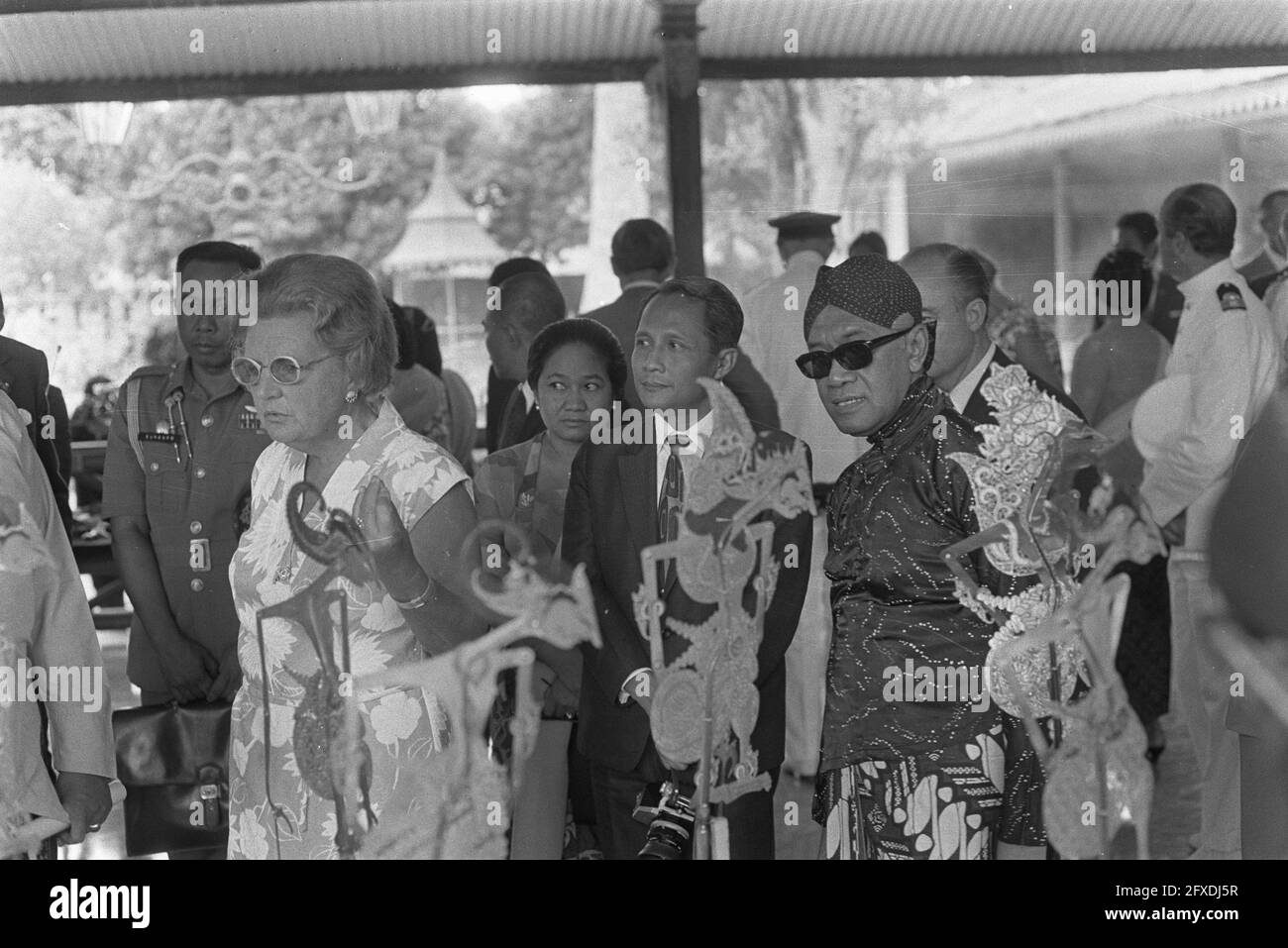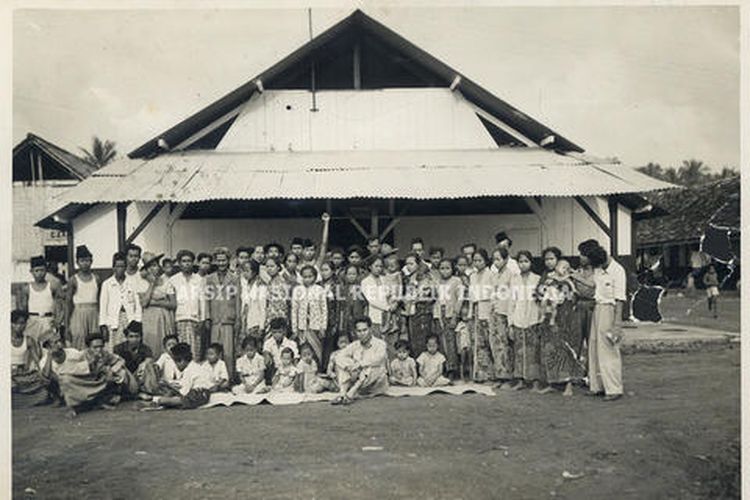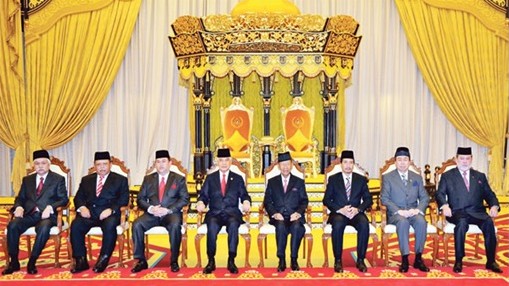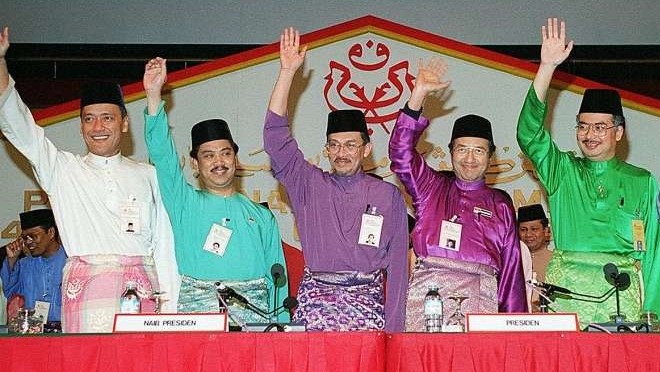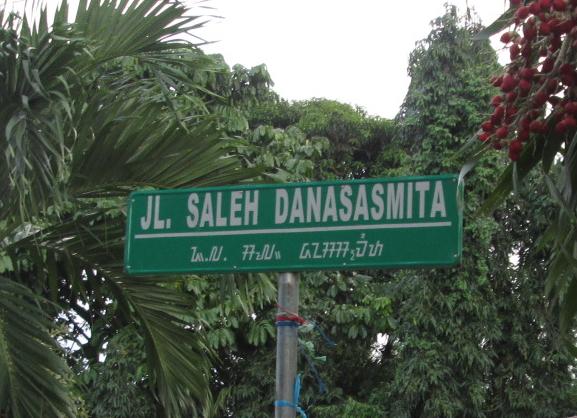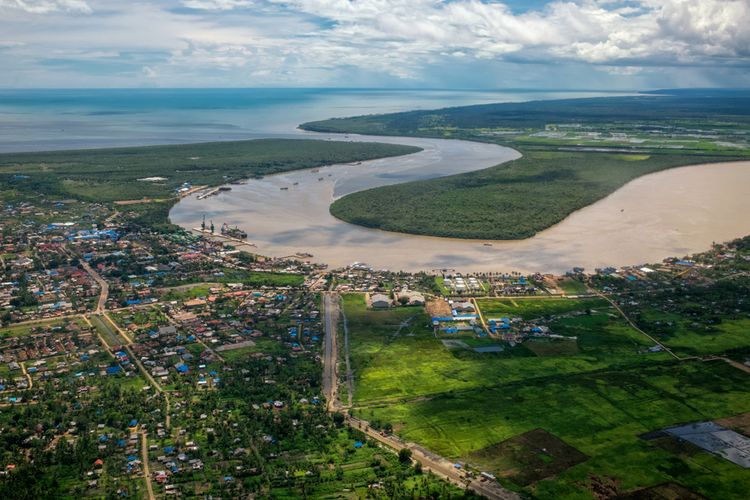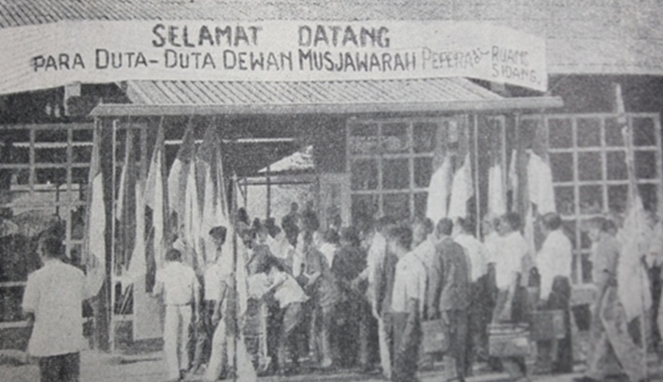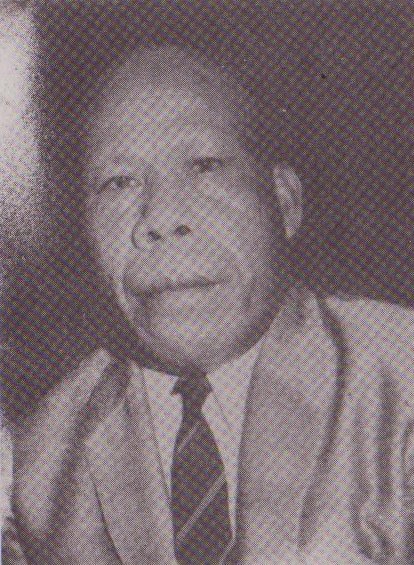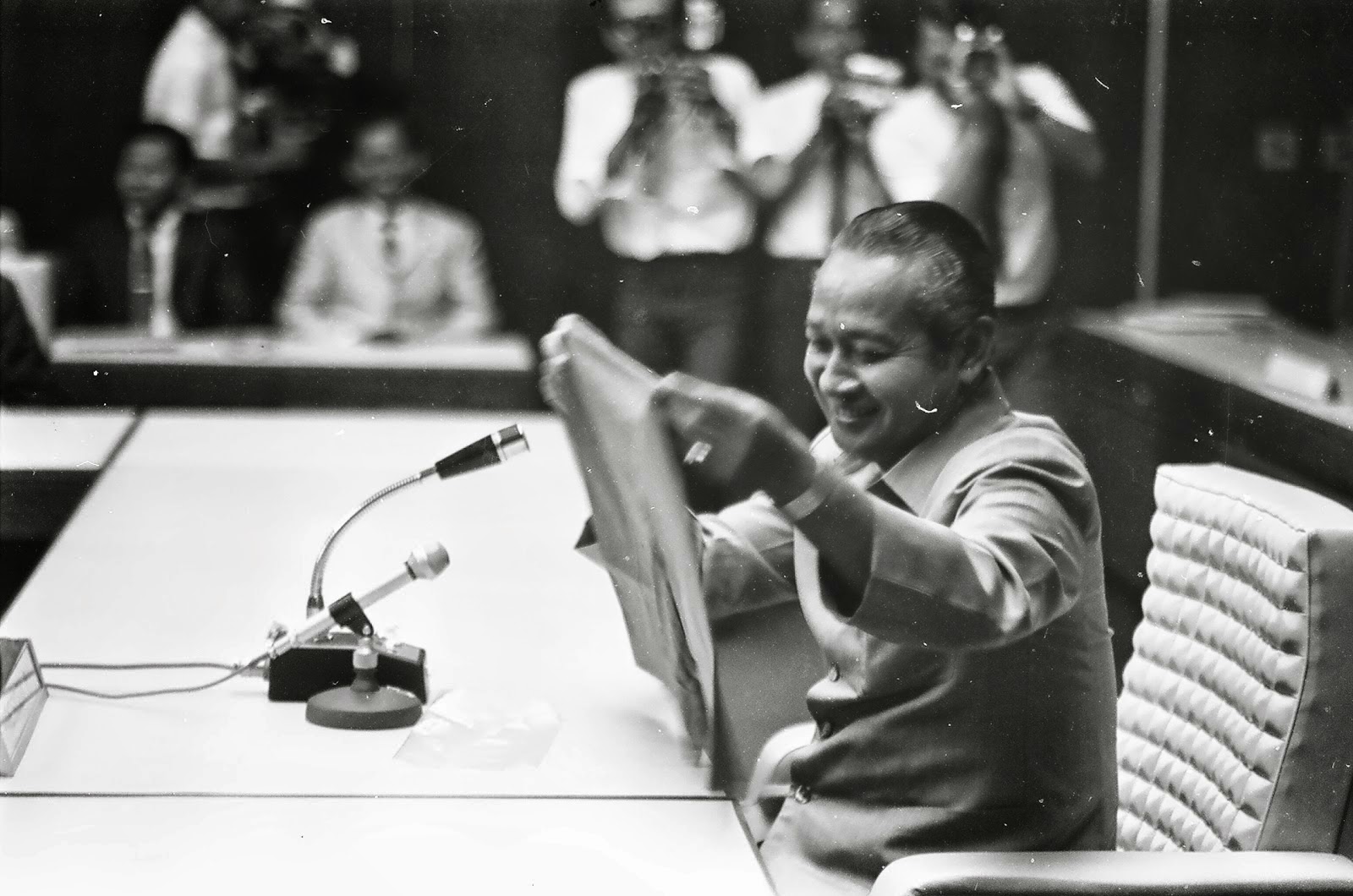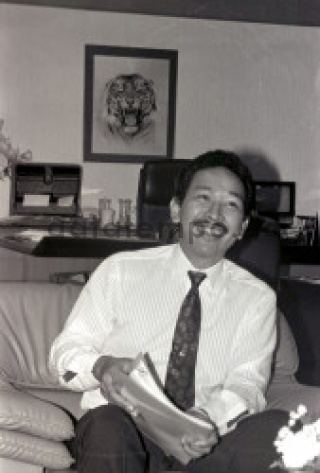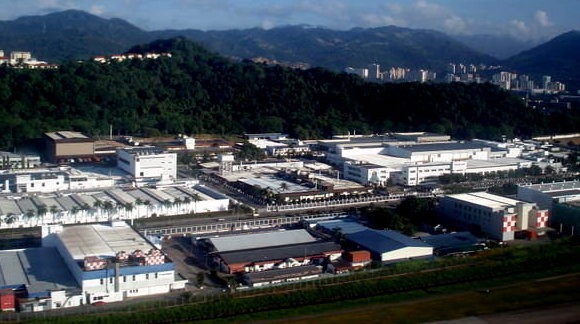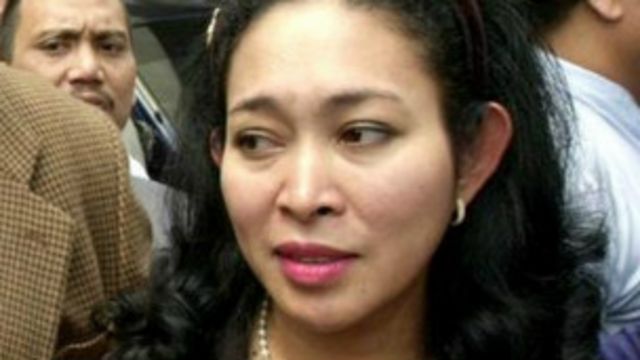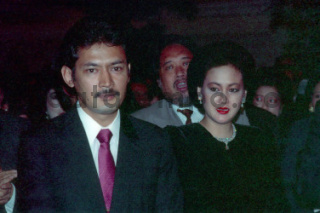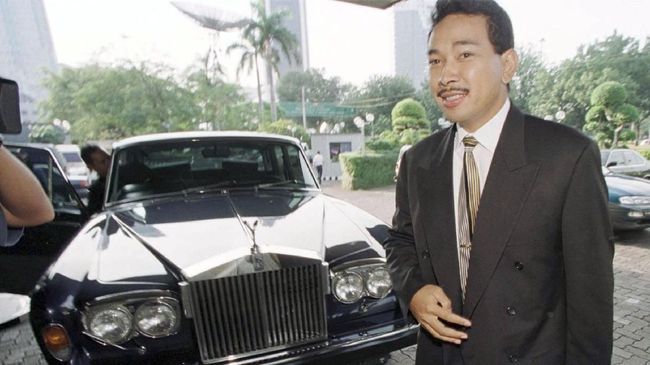2nd August 1988
Penang, Malaya Province, State Republic of Indonesia
The rings of alarm filled Basyir’s ears. It’s closing time for the gates.
A young-adult hopeful watches the closing of the factory. Gaze at the doors which unveil the enormity, he saw what he had always seen for years. The echoes of the prompter so the labour leaves the premises and the guards gracefully usher workers out of the workplace. Although he has done this so many times, he always shivers at the late breeze of the Malacca’s wind on his back; which is radiated with the impeccable sunset before being obstructed by the island before.
Basyir holds the youngest sales position ever sat in the Walini semiconductor industry in the Federal District of Penang. Unlike the industries surrounding Penang’s Industrial Zone, Walini is the only one which adheres to the minimum wage of the Nusantara State Republic, in a district which doesn’t constrain any industrial to do so. Penang Federal District, following Federal law, has the lowest minimum wage in comparison to most State Republics. Because of this, conglomerates have insisted on staying in Federal Districts, while leaving State Republics. However, before the election, Mahathir made a deal with conglomerates that prevent this exodus, but remarkably reversing them much to the worker’s glee. Now, the zone remains as busy as usual, harnessing the power of Indonesian workers.
As a salesman, Basyir noticed the reason that Walini Semiconductor can afford the minimum wage, is because of the industry’s sheer profitability in constructing the materials it produces semiconductors. Returns of semiconductor has been high for Walini Electronics in recent years, because of the extraordinarily high demand from the world. Much to the worker’s disbelief, Indonesia’s Rp 5000 minimum wage is far lower than the workers in Korea, Japan, or Taiwan. Moreover, Indonesia has a strategic location which attracts foreign investors, and no hostile or complicated government like the Philippines or Thailand (which for everyone working here, responded with disbelief).
Basyir enjoys his fulfilled dream, as most young adults have strived for in Indonesia. Born during the peak of Australian Aggression, Basyir’s childhood was filled with the nation’s growth out of devastation. Born to a family of seven whose house was destroyed by Australian bombings; his parents found an opportunity in the manufacturing heart; has worked from the bottom to the top. The ‘Indonesian Dream’, as much of Basyir’s real-life experience, came real with his parents emerged from owning no home to a decent family with a considerable sized income. He was reminded of times when their parents could only afford tempe and tahu with nasi putih, then they could afford ikan asin, then ayam. For the rest of his life, he can see the Indonesian Dream in his family, now capable of eating steik in the most luxurious Western of Menteng, Jakarta. On the entertainment demand, his family can afford to enjoy a vacation in Bali or Bintan, two places that his parents would shock to believe if he had asked them twenty years prior.
The salesman realized that he, along with tens of millions of youths in this nation, have experienced the greatest comeback of a generation in Indonesian history. Benefiting from trade, alliance, and economic growth, Indonesia’s strength emerges from the generations that see what the leadership has led them to. That is why the recent demonstrations in Indonesia were not because of the criticism of decline or stagnation, it was of fear of “privilege” and “unfairness” that saw many occupants feel they don’t receive the “progress” they should have had, a sentiment that echoed the farmers especially. For the workers, however, Basyir noted that most of the pro-labour movement has been political-motivated, not fully in the interest of labours. The Labour Law of 1986 did not alter the lives of farmers and workers as significantly as it should. Basyir, however, commented that it only strengthens Mahathir’s bloc in PPP, thus overthrowing Musa after the death of LKY. His notions came to this conclusion because of his recent conversations with his father, a worker, that felt the unrest before the election didn’t reverberate to most of his peers.
“Basyir, what’s with the gaze?”
He did not realize the middle-aged man that has been waiting for him as all the other workers have left. Andi was the factory’s worker’s chief in the refining manufacturing section – the zone in which semiconductors are checked, refined, or discarded by quality. For Basyir, Andi was his most friendly coworker in this factory, many of whom saw Basyir as too young to have such a rise in career. Envy is a strong emotion.
“Nothing, Pak. Just enjoying the smoke,”
Basyir’s sarcastic remark chuckled Andi. The salesman’s thoughts remained on the company he had worked with. He sees that Walini Electronics, like him, is growing exponentially in the market. He felt that his sales had contributed to Walini’s growth as a prominent semiconductor producer. Still, he felt an unease in his future, because when someone has risen so high, they will start to forget the risk.
Andi pats the young’s shoulder with eyes fixating on the company’s name. “You know, when I first worked here, everywhere is just plain grasslands, no one was here. Yet here we are. In the middle of a smoke farm for the tiniest piece of magic. Semiconductors? I called that electric wizardry.”
A grinning Basyir agrees with Andi’s comment. He wasn’t particularly sure how these semiconductors work, but he knows that these tiny components contribute much to the electric tools he and Andi uses. Telephones, refrigerators, and radios, he understood that these components bring new technological advancements that he couldn’t fathom to comprehend. Moreover, these components that have decent penetration into the Indonesian market, had nowhere close to the insatiable hunger for the same products in the American market, which made Basyir wonder what kind of advanced products the Americans have been inventing.
He had known Andi’s story in Penang, arriving as a soldier of the Indonesian Armed Forces who liberated British Malaya, Andi’s youth came mature with meeting gadis desa of the village a few miles North of Penang. With a twist of romantic stories between the couple, Andi decided to stay in Penang, live with his lover, and grow a family of five. Andi saw the changes in Penang, from a decent trading post, now a bustling growing metropolis with limitless industrial construction. Penang’s full district had no empty lands, either fully purposed for industrial or residential demands. Andi never realized that the same Penang that he had lived in became the government’s top priority of the most advanced industrial zones (electronics and chemicals) in the nation, competing with the capital of Indonesia as the provider of Indonesia’s cheap futuristic technology for the new millennium.
However, Andi’s Penang story was an understatement for the region because the place had been a bustling city well before Andi’s birth. Basyir had known of Penang’s history as the birthplace of well-known Asian intellectuals, a great city full of Overseas-Chinese, and a hub of growing youths that is pro-American. It was the Seberang Perai that he had romanticised about. Unlike the metropolis on the island that started to spread towards Butterworth, the factory rested near Sungai Muda, the border between Kedah and Penang, which saw the biggest contrast of landscape that mirrors almost all of Indonesia. The swaths of farmlands and lush trees conflicted with the iron sheets of the industrial roofs, divided with the small rivers that split between rural and industrial, before arriving at Penang’s closer suburb of red ceramic housings. Basyir noted, should one have seen Penang from the aeroplanes, one would see the greatest painting created by men, the shades of colours dignifying the synergy of agriculture, industrial and residential, all within the same region less than 20 km in diameter.
Basyir rested on the commuter bus that brought him to the factory in the morning, to bring him to his neighbourhood to rest. The lively neighbourhood in Kepala Batas, north of Butterworth, will be the resting place of many workers of Walini Electronics. Basyir rented this place for corporate visitation. He works in Jakarta after all, but the salesman had business to deal with the factory administrator before going back to his sales office. Moreover, he was glad to be sent here, because of the chaotic Jakarta has become. Surrounded by competitors, Walini Electronics has difficult times with electronic enterprises with far greater influences undercut the corporation. Semiconductor, unlike the energy or textile industry, is a sector that is still new for Indonesia but boomed in East Asia. Naturally, as Taiwan, Korea and Japan had received the economic miracle of the semiconductor industry, nations such as Indonesia, the Philippines and Thailand emerged to contest the existing powers. This, fortunately, was a victory for Indonesia, because the efficiency developed by the LKY premiership had made Indonesia a much cheaper, more practical, and better exporter of semiconductor energy than the other two which could replace the established ones in Japan, Korea, and Taiwan. The United States, with the technology it has, demanded more semiconductors than its industry could produce, thus demanding imports from cheap counterparts to fill the vacancy.
Basyir is reminded of his first sales pitch to a US semiconductor representative of Motorola. He heard from the higher-ups which Walini Electronics had agreed to a production agreement, which buys cheap semiconductors from Indonesia for United States consumers. Basyir, along with his senior, gets a good agreement of selling revenue of nearly 1 million USD, a first deal he celebrated with his first owned television. Basyir was an excellent salesman, dashing and welcoming, who capture the gaze of foreign investors. In a few months after acquiring his sales job, his career spiked as one of the best salesmen in the company.
Basyir’s minds were interrupted with the commuter bus’s poster which depicts the campaign slogan of Guntur Sukarnoputra. The resemblance of him with his father is uncanny, the features and passion he ignited were electrical. In Penang, a growing number of labours do support the leaning-communist party of Indonesia, Partai Pekerja Indonesia. Although they have campaigned for more alignment with the United States, the grassroots of the party remained loyal to the Soviet cause, especially apparent when the Soviet Union has been developing its domestic matters, in contrast to the United States' increasing foreign involvement everywhere. Most people who opposed the United States oppose how bossy the superpower has been on subsidiary countries, which looks like an insult to developing countries’ populace. Basyir, still, understood that despite the United States having a mixed response in Indonesia, many of whom are grateful for the superpower’s contribution to Indonesia’s rapid economic growth.
The poster which presents Guntur also reminded him of his sales pitch two years ago. Basyir received a contact from Pravetz Computers, their demands of buying semiconductors for Indonesia caught a curiosity in Basyir’s mind. It was because of two things: the size and the nation. Pravetz Computers is a computer enterprise in Bulgaria, one of the COMECON nations that is within the Soviet Union’s sphere of influence. Walini’s sales group has been aware of the organization’s rising demand for semiconductors, competing with the United States' demands, which pique the company with great interest. What were the Soviets trying to do? Why do they need our semiconductors? These questions dwell inside Basyir’s thoughts, but he never said them out loud, nor comments about them, because the deal made him what he is today. The deal of nearly $5 million cemented Basyir’s position in the company as the best salesman of the year.
As the salesman’s mind cleared a little, he now listens to the hit music Antara Aku, Kamu dan Bekas Pacarmu from Iwan Fals. The guitar strums seem to have a beat on young commuters, who have shown little movements following the rhythm. Then, he watched the sunset of Penang, a little too late, as the lamp lights on the streets turned on, giving a glimpse of shine towards the peaceful countryside of Penang, illuminating the quiet marshes, little homes and trees surrounding it.
Jalan Cendana 6-8, Menteng, Distrik Federal Jakarta
Ibu Tien caresses her forehead. Without her husband’s presence, the family has cracked more and more, as each child bicker on their ambitions, money, or power, which put the previously calm household. After the car accident in 1980, Cendana Group – before not organized into a conglomerate group – had years of struggle on who should be the successor of all her husband’s companies. Naturally, daughter Mbak Tutut has been the first-in-line of the group, but her political ambition that create Partai Rakyat Demokratik insinuated other children to assume the eldest child to shift into a political focus, not a business one. Therefore, Bambang and Didik all aimed for that position. Eventually, the climate of the group was almost partitioned, and Ibu Tien intervened and assumed the leader of the Cendana Group until her children mature.
“PT Citra Auto Nusantara has had the license for Mercedez Benz and Ford Motor Company for decades, you will not take that away from me.”
The thunder of Bambang Trihatmodjo on the front porch can be heard by Ibu Tien who has been sitting in the living room.
“How brave considering PT Humpuss’s license on Tol Laut has been broken by your own doing.” Didik retorted.
Ibu Tien and Mbak Tutut, 1982
As early as Didik’s inheritance to the energy company, her youngest son has received the most profitable sector of the group for almost three years. Didik Budiharto, after his Angola military campaign ended up by discharge of disobedience, made Ibu Tien sympathy to give him PT Humpuss, once the only company Ibu Tien has hold of during the messy inheritance fight. At that time, PT Humpuss hasn’t had the growth Didik’s reforms had made, possible because many thought Suharto’s venture in Papua had been too ambitious, despite promising reports. Didik, however, had been a staunch believer of his father’s dreams, giving up all his luck on the industrial potential Papua has. Ibu Tien was ecstatic that her son did get through with all its returns, many of his siblings don’t like the changes.
The balance of the group rests within Ibu Tien’s insistence to split between sectors of the Cendana Group. Mbak Tutut has controlled the media and retail sector of the group. The media is suitable for Tutut’s political career, while the retail sector retains the profitability and fame of Mbak Tutut itself. The most famous retail of them all, Taman Anggrek Mall in Jakarta, received a good response for the expansion of commerce in the Grogol Subdistrict. Mbak Tutut also involves herself in supermarkets, cooperating with Carrefour in the Indonesian market. Mbak Tutut’s business venture was not as great as her other brothers, probably because she is also the chairman of Partai Rakyat Demokratik, a political journey which is complicated with an uncertain political future.
Titiek Suharto, Ibu Tien’s other daughter, owned the entertainment and agriculture sector of Cendana Group, which sometimes coincided with Mbak Tutut’s retail ventures. Owner of Taman Mekarsari, Titiek focuses on expanding profitability in fruit production (like zalacca, jackfruit, oranges, rambutan, starfruit, melons, jackfruit, pineapple, and many more). Titiek’s most profitable sector is Taman Mini Indonesia Indah, constructed south of Halim Airport, which made the greatest domestic entertainment world in Indonesia.
For Bambang and Didik, the divide should be between Bambang in the property sector and Didik in the energy sector. Bambang owned PT Asriland, which contributes greatly to the rapid suburban development of Bintaro Jaya, where Bambang has been said to be “Kebayoran Baru of Tangerang”. Bambang also developed many in Malaya and other stuff, joined with old Suharto friends constructing the great suburbia of Indonesian residential expansion. Didik, on the other hand, owns the energy sector, such as mining or extraction, which bases mostly in Sumatra, Kalimantan, and Papua. However, the sector which put these brothers into a fight is the automotive industry.
Bambang Trihatmodjo, 1984
Didik Budiharto, 1988
Since the early 1970s, the automobile industry in Indonesia had earned the boom sensation with Astra's first Toyota Kijang that made cars mainstream in Indonesia. Since then, efforts to dominate Indonesia’s automotive industry remained heated, with companies such as Nissan, Daihatsu and Honda attempting to topple Toyota’s growing dominance. There are also Western auto companies to consider, such as Ford, Chevrolet or BMW and Mercedes-Benz.
The early struggles of Bambang started after his idea to accept luxurious supercars as his main venture. Mercedes-Benz, Ferarri, and Lamborghini he attempted to appeal to them, promising a good market in Indonesia. However, since Indonesians haven’t reached the profitability to buy these sorts of cars, made Bambang control himself and pushed for automobiles such as Ford, or Daihatsu. The only successive break was the introduction of Mercedes-Benz to Indonesia, which made the company the “high-class car” of Indonesia. However, Bambang soon reached a deadlock when Daihatsu had already been courted by Didik’s new automobile company, which also noticed the growing potential of the automotive market. Didik’s focus, unlike his brother, is more nationalistic as his dream is to create the first domestic car, completely designed by Indonesians, to be launched as a pure Indonesian car. This, however, proved to be a difficult job for the young entrepreneur, thus he resorted to the most effective step to achieve his goal. He invited Daihatsu, Isuzu, Kia, and Hyundai to his business venture, appeasing them for the Indonesian market.
The tension between the brothers began after Daihatsu successfully bolted to Bambang as their main Indonesian distributor. The younger brother had been furious about this deal and Didik eventually started to form his brand, Timor, based on the stolen designs of Daihatsu. Moreover, Didik eventually began his counterattack against Bambang’s greed when Didik purposefully blocked Bambang’s property sector to Papua and let another property developer encroach on the new suburbia of Sukarnopura. In retaliation, Bambang messed with PT Humpuss’ Tol Laut license, which made the distribution of Humpuss mineral exports much harder.
Unlike Suharto, Ibu Tien had little corporate experience in her life, but she had great experience in dealing with her children. As the witness to her children’s lives, Ibu Tien had carry the torch after Suharto’s death, carrying the legacy to continue the Cendana family intact.
“Stop it.” Ibu Tien’s soft voice dominated against the growing tension in the other room. Ibu Tien had little problem silencing the bickering children, she had used this authority frequently, especially after her as the leader of the household.
“You two must sort it out. I don’t want to hear it for the rest of my life. What would Dad say if he sees both of you ruining his legacy?”
The next sentence ended the brother’s brawl. Suharto had been the greatest icon of the Cendana family. Remembered as a general, politician, leader and influential, the old man still owns an influence on Indonesian politics, even more so in the military.
Ibu Tien proceeded with a discussion of the Cendana Group. Their future is quite uncertain as, although very influential in the political business, the Cendana family still overshadows Lippo and Salim, the regional government cliques of Singapore, Johor, Kedah, and Brunei, with also the threat of Trihandoko’s BUMN. She reminded me that in times of competition, the Cendana family should stay strong, united, and fully committed to a common goal.
Tanah Abang, Federal District of Jakarta, Indonesia
Director Tedjo Budianto gazed upon the little land between the rails and highways of Tanah Abang, as the future headquarters of Jasa Marga.
He reminded the times when he was appointed contractor for the Jakarta-Bogor-Ciawi (Jagorawi) Toll Road that stretched 46 km as the first. Not long after the construction, Nasution inaugurated PT Jasa Marga, also the first toll-road company in Indonesia. As part of Nasution’s Program Infrastruktur, many of the toll roads have been given to PT Jasa Marga for construction. The government program to connect Java and Papua with highways gave Jasa Marga the opportunity the monopoly of the road construction business. After Jagorawi, PT Jasamarga has been given more opportunities for toll construction. Currently, he has memorized all operating toll roads under his watch.
After the construction of Jagorawi, the Nasution government announced that every toll road Indonesia has, it should accommodate car travel to the main transportation points of each metropolis. That meant airports, ports, residential complexes towards office centres, or ring roads around the busiest section of the city. This, as stated in Nasution’s programs, had become the blueprint of Indonesia’s construction, as many of the 70s engineers envisioned potential connections for the year 2000. As a result, the federal government have tried to maintain the lands for these sorts of developments, to avoid needing needless alteration for lack of planning. Because of PT Jasa Marga's monopoly in Java toll road construction, the company has been in all toll construction until 1977. These toll roads, he memorized, had all been under Jasa Marga’s operation.
| No | Name | Nickname | Length | Date of Operation |
1 | Jalan Tol Jakarta-Bogor-Ciawi | Jagorawi | 46 km | April 1971 |
2 | Jalan Tol Dalam Kota I Seksi W1 (Tomang- Tanah Abang-Manggarai) | Lingkar Dalam Kota | 9.1 km | May 1973 |
3 | Jalan Tol Semarang | Semarang ABC | 24.75 km | August 1974 |
4 | Jalan Tol Jakarta-Tangerang | Janger | 29 km | March 1975 |
5 | Jalan Tol Bandara | Tol Bandara | 18.9 km | June 1975 |
6 | Jalan Tol Jakarta-Kebayoran Lama | Jakeb | 6.2 km | July 1975 |
7 | Jalan Tol Surabaya-Gempol | Surgem | 45 km | August 1976 |
8 | Jalan Tol Dalam Kota I Seksi W2 (Manggarai-Jatinegara) | Lingkar Dalam Kota | 2.8 km | December 1976 |
9 | Jalan Tol Jakarta-Cikampek | Japek | 73 km | October 1977 |
10 | Jalan Tol Belawan-Medan-Tj. Morawa | Belmera | 34 km | October 1977 |
11 | Jalan Tol Padalarang-CIleunyi | Padaleunyi | 33 km | February 1978 |
12 | Jalan Tol Tangerang-Merak | Tamer | 72,45 km | July 1978 |
13 | Jalan Tol Dalam Kota I Seksi E (Matraman-Pulomas) | Lingkar Dalam Kota | 7.1 km | July 1978 |
14 | Jalan Tol Surabaya-Gresik | Surgres | 20.7 km | March 1979 |
15 | Jalan Tol Surabaya-Mojokerto | Sumo | 36.27 km | April 1981 |
16 | Jalan Tol Dalam Kota I Seksi N (Tomang-Kemayoran-Pulomas) | Lingkar Dalam Kota | 9.5 km | May 1982 |
17 | Jalan Tol Dalam Kota II Seksi E (Tanjung Priok-Cawang) | Lingkar Dalam Kota 2 | 13.5 km | July 1983 |
18 | Jalan Tol Dalam Kota II Seksi W2 (Tanjung Duren-Cawang) | Lingkar Dalam Kota 2 | 13.4 km | September 1983 |
19 | Jalan Tol Palimanan-Kanci | Palikanci | 26 km | October 1984 |
20 | Jalan Tol Kebayoran Lama-Ulujami | Kebajami | 2.5 km | March 1984 |
21 | Jalan Tol Tanjung Duren-Kapuk | Lingkar Dalam Kota 2 | 9.1 km | April 1985 |
22 | Jalan Tol Palembang-Indralaya | Palindra | 21.69 km | September 1985 |
23 | Jalan Tol Kertosono-Mojokerto | Kemo | 40.5 km | October 1986 |
24 | Jalan Tol Cikopo Palimanan | Cipali | 116 km | May 1986 |
25 | Jalan Tol Semarang-Batang | Batarang | 75 km | August 1987 |
26 | Jalan Tol Semarang-Solo | Somar | 72.64 km | October 1988 |
However, arriving in 1977, the Subandrio Premiership opened toll-road construction to the private sector and other non-federal government companies, which slowly reduces Jasa Marga's monopoly on toll-road construction. Also, of Trihandoko’s feud with the former Jasa Marga chairman, the federal government gave more opportunities to a new construction company, PT Citra Marga Nusaphana Persada (CMNP). This new company, in the greatest irony, was part of Cendana’s conglomerate family. Currently, the dominance of Jasa Marga has been contested by PT Waskita Karya, PT Hutama Karya, PT Temasek Construction, and PT Rekayasa Malaya.
Although Jasa Marga’s monopoly has diminished, the company remained the most significant toll road company in Indonesia. With a total of almost 900km of road constructed in the last 15 years, PT Jasa Marga has been awarded as the fastest-growing company in Indonesia, and its recognition gained interest outside of Indonesia. Still, PT Jasa Marga found problems, especially with future road constructions in the Federal District of Jakarta.
Jalan Tol Pelaburan Pluit-Tanjung Priok, or Harbour Toll Road, is the planned construction that linked Tanjung Priok and Pluit to ease the congestion in Tol Dalam Kota. With the increase in traffic volume of trucks and residential vehicles, Lingkar Dalam Kota has occurred regular traffic jams on rush hour megapolitan. Moreover, with more emphasis on rail construction, the LKY premiership had requested railway construction to be prioritized. In early 1983, Jasa Marga had agreed with Subandrio on finishing Lingkar Dalam Kota 2. However, the northern section of that ring road (which is Harbour Toll Road) received intense criticism from District Secretary Hendarto for the destruction it will cost on Kota Tua, the place where Indonesia is trying to receive the UNESCO World Heritage.
Jasa Marga’s regular method of toll construction was either building the on-ground toll road section or constructing an elevated section for multi-level crossing. As evident from nearly the interchanges made during the early 80s (Tomang Interchange, Tanah Abang Interchange, Kemayoran Interchange as examples) many of them involved two (rarely three) levels of crossing. The Kota Tua section to be crossed by the Harbour Toll Road will be cutting Museum Fatahillah with Pelabuhan Sunda Kelapa. Also, with Hendarto’s insistence on rebuilding Kota Tua as a fully colonial architecture, the district secretary remains ardently opposed to bulldozing the zone for toll construction. Other concerns, such as flooding, tunnel collapse, ventilation system, and other concerns have been Jasa Marga’s greatest challenges.
Hendarto’s solution to this ordeal, quite simply, was to dig a tunnel on the entire stretch of Kota Tua. That had shaken the company a little, since for all its history, the company never planned for tunnel construction. Most of this has been the railway companies, which still received many issues on the Gambir tunnel which is hot, crowded, and cracking all the time. Early attempts at tunnel toll road construction were PT CMNP’s Jalan Tol Luar Kota Jakarta Seksi S2 of TMII-Pondok Indah. They had made underpasses for many of the toll’s construction, but never on full-length tunnel construction, especially to accommodate high volumes of truck vehicles.
PT Jasa Marga also suffered significant setbacks for Harbour Toll Road for their land in Kota Tua, Ancol and the stretch towards Tanjung Priok has been used as freight railway access for industries in Kapuk and Cengkareng. With Hendarto’s plans to change focus to train connections, the District Secretary has made persuasive comments to LKY and Musa Hitam that highway construction isn’t feasible for highly dense cities that Jakarta must be. Therefore, for the last decade, Jakarta has constructed more railway tracks than toll roads. From the MRT Expansion, Freight Connection, Halim Railway Access, and Bandara Suryadarma Railway Access, Hendarto’s district planning was full of railway construction. Director Tedjo, although irritated with Hendarto’s alteration, still commend him for the amazing transformation of the city of Jakarta. It is for the District Secretary that the metropolis’ inner city had better pedestrian access, public transportation, and especially hygienic service competing with European states.
Jasa Marga’s disadvantage over other competitors is due to its dominance in the road construction sector, the company has become idle in innovation. Many of the newer construction companies advocated more innovation, such as the longest elevated toll road in Indonesia, both Jalan Tol Bekasi-Kampung Melayu and Jalan Tol Tangerang-Angke. Then the first planned underground toll road that connects Kebayoran Baru with Pondok Indah, also with the fastest construction toll road connecting Pekanbaru and Dumai. As more companies presented themselves to be more sophisticated than Jasa Marga, the company started to lose government projects. Not to mention regional monopolies have begun taking place, as LKY’s acceleration method gave Singapore and Malaya construction companies a monopoly on the region’s toll construction, barring Jasa Marga from entering the fold. It is also worsened with those companies having more efficient, better results and better operating systems than Jasa Marga.
Director Tedjo, the new face after Mahathir personally appointed him as the new face of Jasa Marga, has plans to reverse the trend. Mahathir’s appointment has been his method to reduce PT Temasek Construction (Singapore’s company) into intruding too much on Malaya, and all of Indonesia’s urban construction. Tedjo is the bravest director to fully immerse in the challenges of Harbour Toll Road.
Hendarto’s initial tunnel plan was 2.5 km that will bypass Kota Tua, and eventually surface up ad both Pluit and Kampung Bandan on both sides. Still, concerns about the connectivity of Ancol (currently revitalizing the area as an urban beach) and Kemayoran (for the region’s separation by railway) have been many of the challenges of the Harbour Toll Road connectivity. Eventually, PT Jasa Marga did the most insane proposal ever given to Hendarto. Instead of the 2.5 km underground access, PT Jasa Marga planned for a whopping 5 km underground connection, which the Harbor Toll Road remained under from the early determined Pluit, but extended towards Kemayoran, where the railway access from Senen joined with the ones from Kota. If completed, it will become the longest underground toll road in Indonesia. The construction cost spiked a little from Tedjo’s construction, but it gained praise from the federal government for its innovation in highway construction. However, the Nasution’s general plan for Jakarta noted that if Jakarta did not construct a toll road north in the sea, the Harbour Toll Road will subject to double-decker access as planners have predicted increasing traffic between vital access of Suryadarma Airport and Priok Harbour, with more density in neighbourhoods of Pademangan, Pluit, Kapuk and Warakas.
Tedjo was shocked by the sound of metal clanging from the site floor. The workers there had bumped into another metal pole, giving the metals a low hum. Then, Tedjo finally remembered his reason for arriving here.
“Dudi, how’s the construction of the new headquarters?” he gestured at the young employee.
“Current on time, director. As we have the permission to construct our building, we have been advancing on the foundation of the headquarters, as well as reminding the construction that the highway is still active, thus reducing accidents that might impede the flow. In terms of schedule, we will start construction of the upper platform possibly next September.”
This new headquarters of Jasa Marga, Tedjo envisioned, will be the cornerstone of Jasa Marga’s dominance in the highway industry. As becoming the first and most influential company in Indonesia, Jasa Marga should have the most iconic headquarters. The 1.45 hectares of unused plot between the railways of Tanah Abang and Tanah Abang Highway Interchange, Tedjo noted, will be the best location for Jasa Marga’s new headquarters. It is still inside of the 3100 ha Ring 1 of Jakarta, located strategically on the busiest toll road of Jakarta, along with the connectivity of the commuter line.
Tedjo’s plan for the headquarters is even crazier, he intended to have the building stand precisely on the Tanah Abang off-ramp of the interchange. That way, he would present Jasa Marga as the innovation of building, with emphasis on the toll road they have constructed also referred. The government, with intense criticism, ultimately allow such an ambitious proposal, but Tedjo need to prove to himself that his vision remains the best for the company, or the Federal government sack him like the previous one.
Three stories, the common man, the conglomerate and the company that construct Indonesia. Kinda explains how fast Indonesia accelerate from all those destructions. The first kinda implies more on foreign events, but more on that later. The second story pretty much defines that Cendana Post-Suharto is more successful as a businessman rather than a political dynasty ITTL, more on the family in future updates. For the third story, can't help it from a construction geek like myself.
ITTL Tol Dalam Kota is almost like OTL 6 ruas Tol Dalam Kota Jakarta, while OTL Jakarta Inner Ring Road is ITTL Tol Dalam Kota 2, with slight exceptions. Completely new toll roads here include Tol Bekasi-Kampung Melayu which passes Banjir Kanal Timur instead of Kali Malang. Also, Tol Cipali is 29 years early, and Tol Surabaya Mojokerto is 36 years early, very eager to see what 2020 ITTL Indonesia will look like. For regions in Malaya and Singapore, due to LKY's liberalization and acceleration program, many of these toll constructions have been constructed by local companies, instead of federal ones like Jasa Marga.
